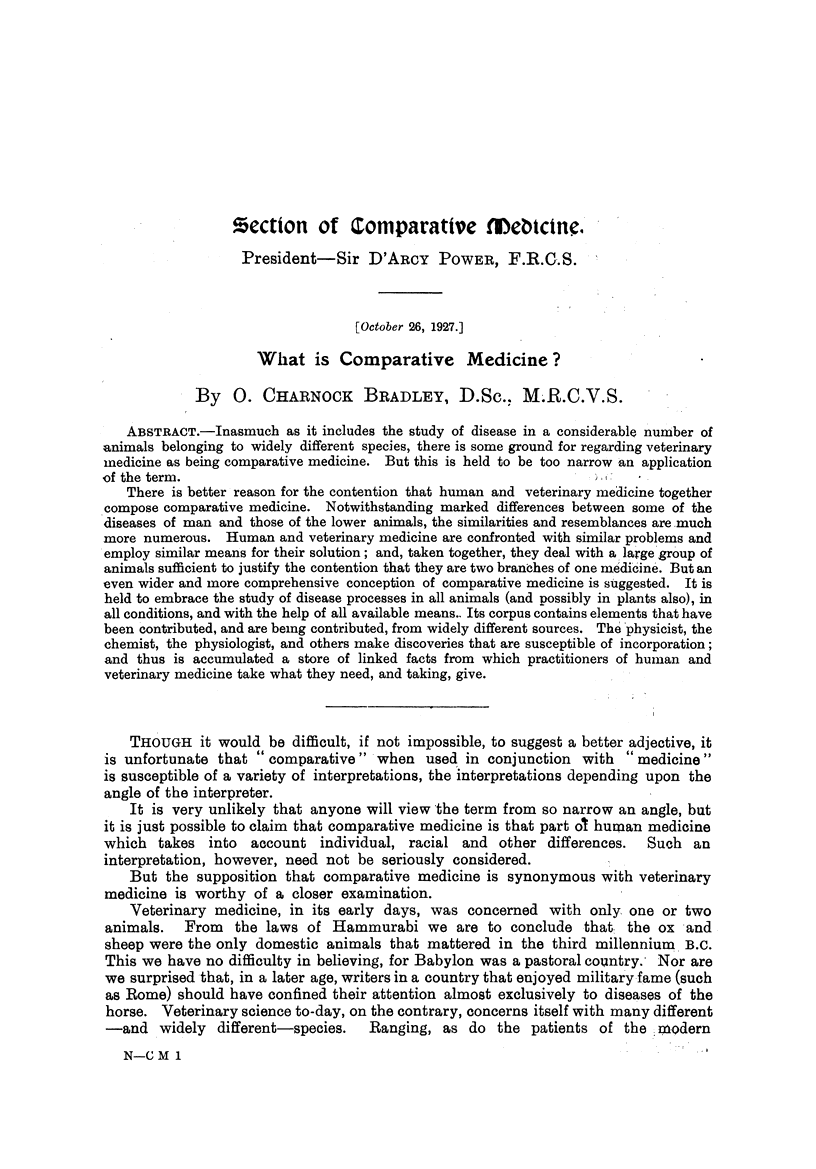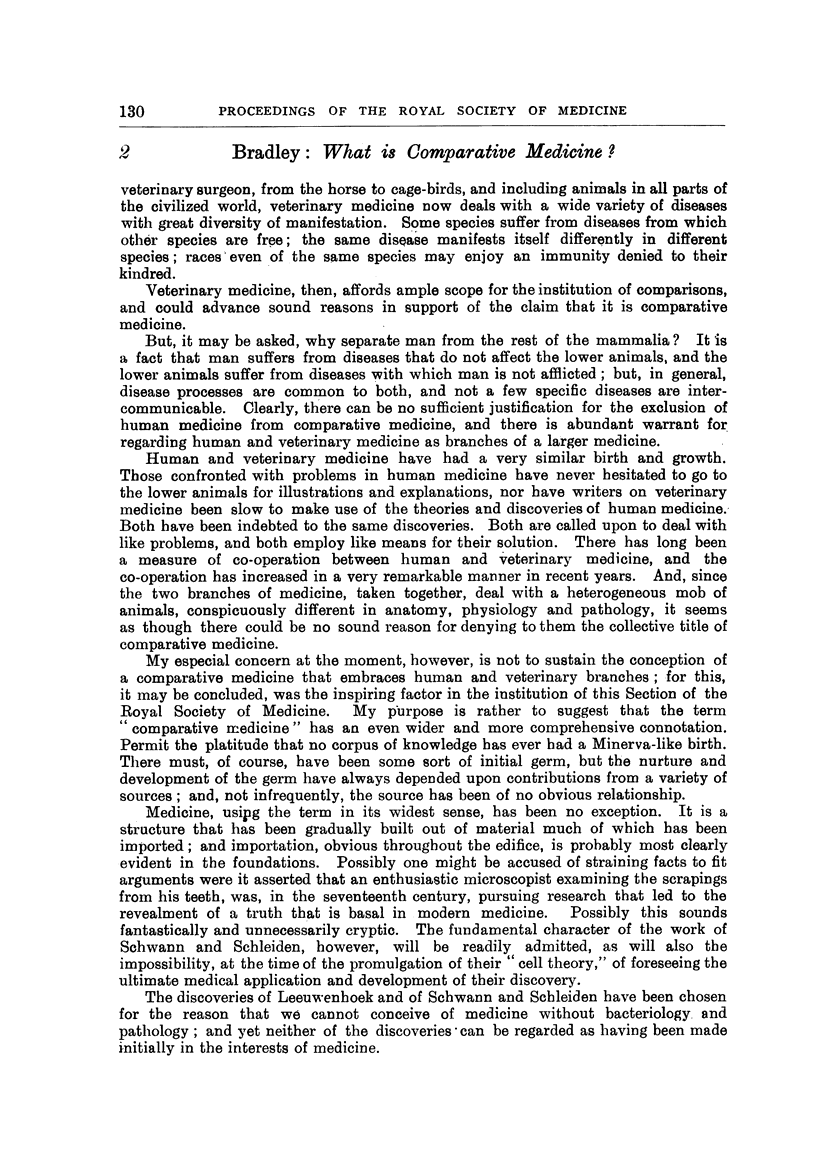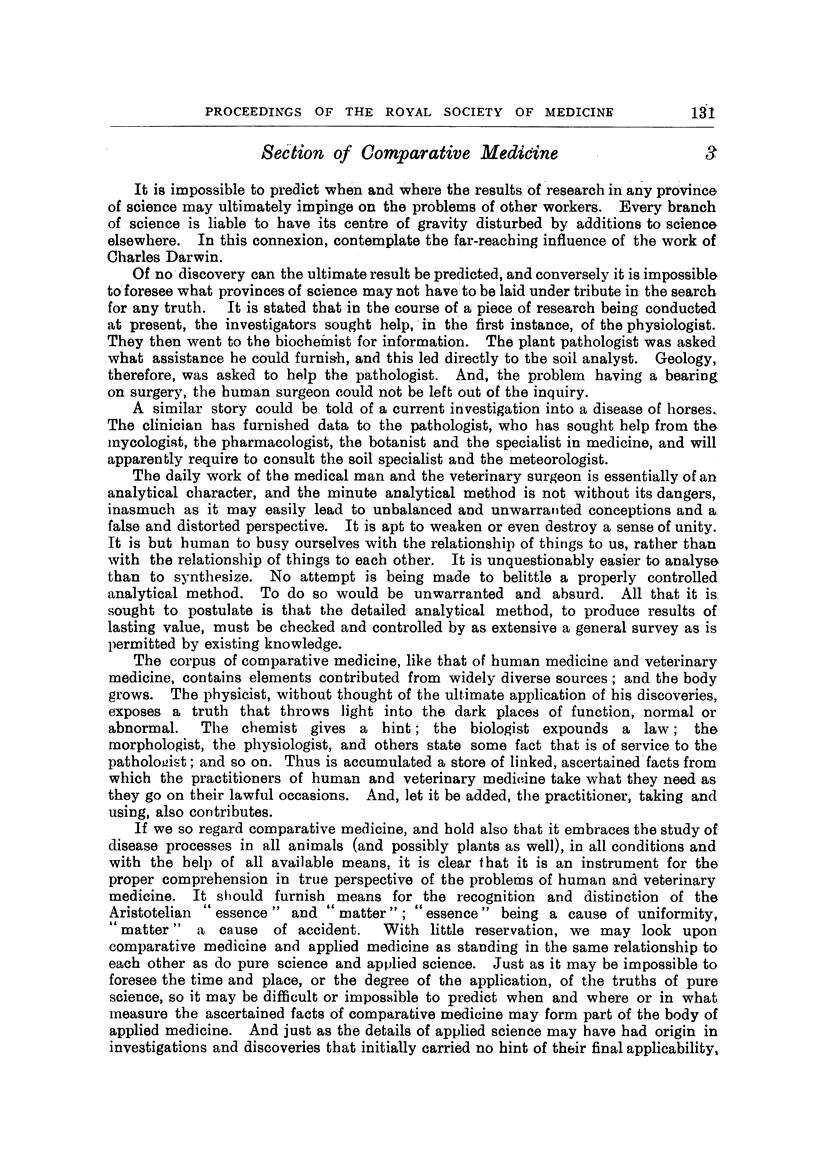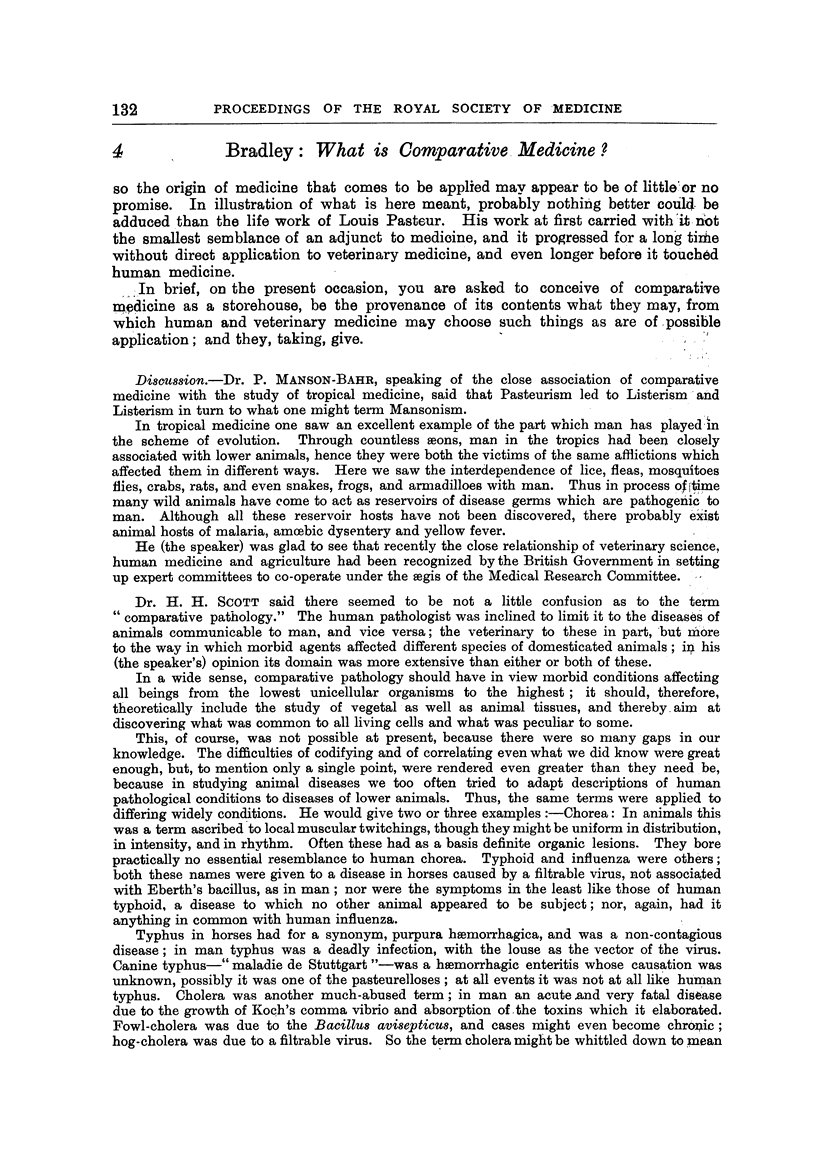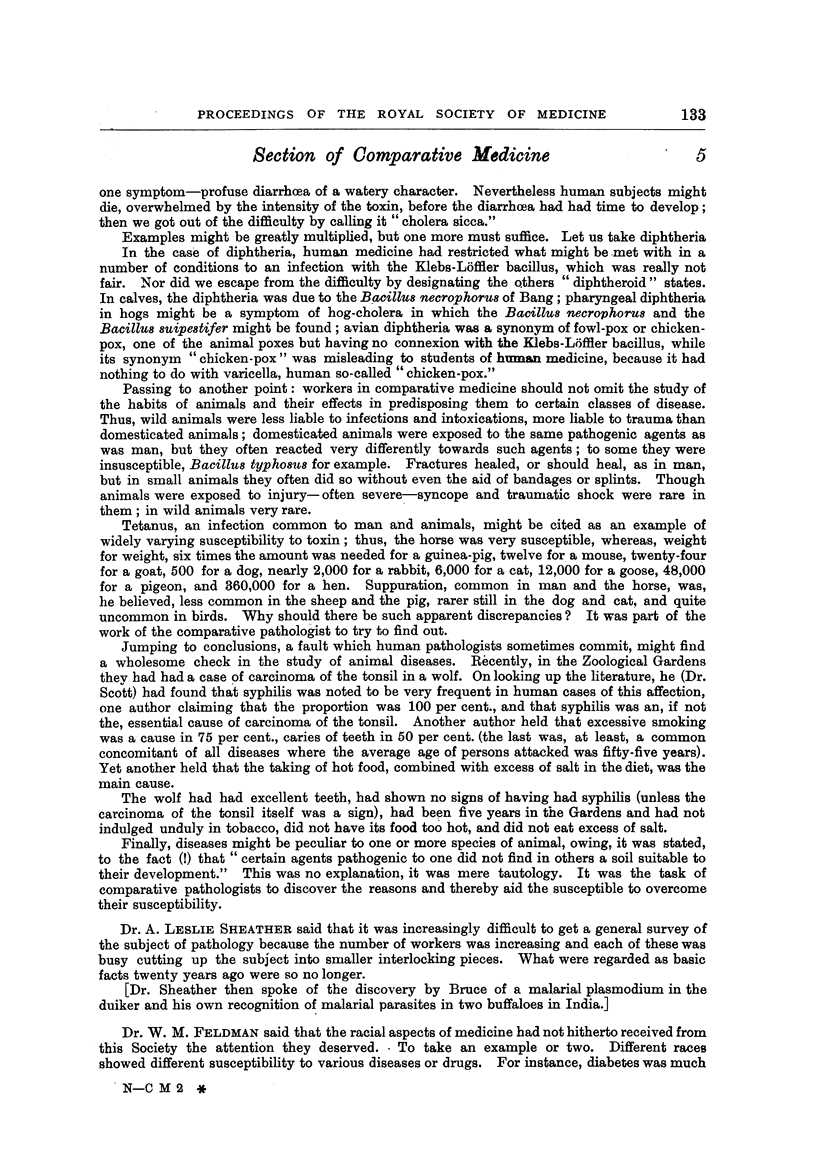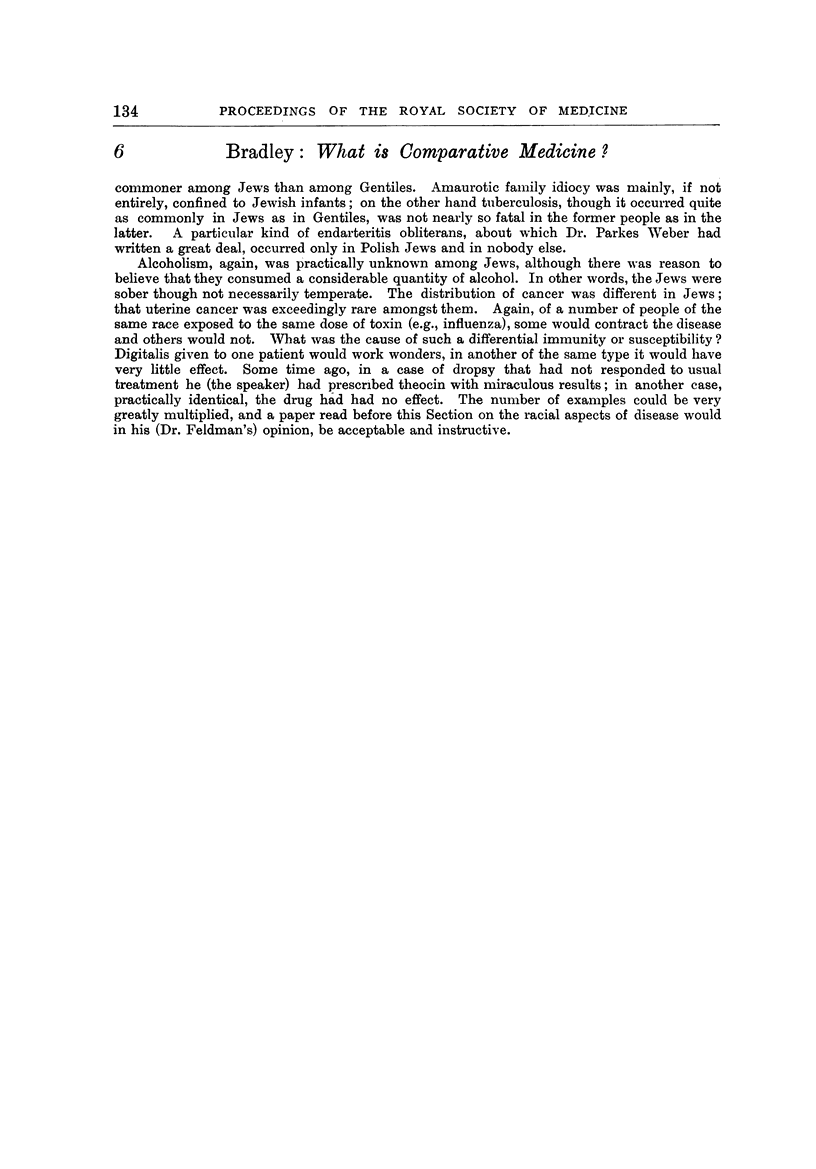Abstract
Inasmuch as it includes the study of disease in a considerable number of animals belonging to widely different species, there is some ground for regarding veterinary medicine as being comparative medicine. But this is held to be too narrow an application of the term.
There is better reason for the contention that human and veterinary medicine together compose comparative medicine. Notwithstanding marked differences between some of the diseases of man and those of the lower animals, the similarities and resemblances are much more numerous. Human and veterinary medicine are confronted with similar problems and employ similar means for their solution; and, taken together, they deal with a large group of animals sufficient to justify the contention that they are two branches of one medicine. But an even wider and more comprehensive conception of comparative medicine is suggested. It is held to embrace the study of disease processes in all animals (and possibly in plants also), in all conditions, and with the help of all available means. Its corpus contains elements that have been contributed, and are being contributed, from widely different sources. The physicist, the chemist, the physiologist, and others make discoveries that are susceptible of incorporation; and thus is accumulated a store of linked facts from which practitioners of human and veterinary medicine take what they need, and taking, give.
Full text
PDF